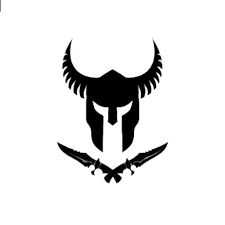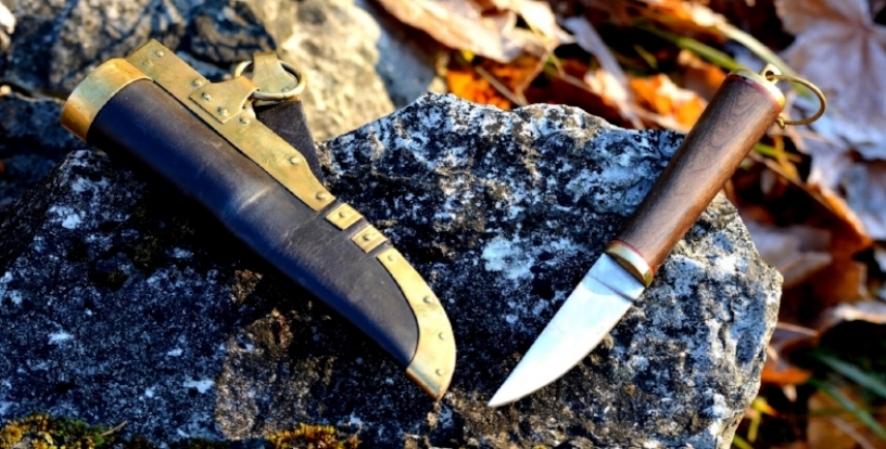Nordic and Scandinavian knives hold a significant place in the cultural and practical heritage of the region. Used by Vikings, Sámi, and other Nordic peoples for thousands of years, these knives were essential tools for hunting, fishing, cooking, crafting, and even combat. Each type of knife reflects the unique needs and traditions of its origin. Below is a guide to the various types of Nordic knives, their characteristics, and their uses.
Summary
ToggleSwedish Knife : Mora
Overview : Originating from Mora, Sweden, the Mora knife is one of the most versatile and affordable knives available. It is widely used for hunting, fishing, and camping.
Characteristics :
- Blade: Straight, often made from high-carbon steel or stainless steel.
- Handle: Typically made from wood, plastic, or rubber.
- Sheath: Usually made from plastic, with some variations featuring leather.
Uses : Ideal for general outdoor activities, including carving, cutting, and food preparation.
Finnish Knife : Puukko
Overview : The Puukko is a traditional Finnish knife known for its robust and functional design. It is primarily used for hunting and fishing.
Characteristics :
- Blade: Curved and often made from high-carbon steel.
- Handle: Typically made from wood, leather, or bone.
- Sheath: Generally made from leather.
Uses : Perfect for skinning game, carving, and general utility tasks.
Lapland Knife : Leuku
Overview : The Leuku is a large knife from the Lapland region of Finland, used for heavy-duty tasks like hunting and wood cutting.
Characteristics :
- Blade: Wide and straight, designed for strength.
- Handle: Made from wood, often with a sturdy grip.
- Sheath: Typically crafted from leather.
Uses : Suitable for chopping, splitting, and large-scale cutting tasks.
Sámi Knife
Overview : Used by the Sámi people in the Arctic regions of Scandinavia, this knife reflects the traditional craftsmanship of the Sámi.
Characteristics :
- Blade: Short and wide, often made from high-carbon steel.
- Handle: Made from wood or reindeer horn.
- Sheath: Usually made from leather or fabric.
Uses : Ideal for everyday tasks, including cutting and crafting, with a focus on practicality and durability.
Norwegian Knife : Helle
Overview : The Helle knife is a traditional Norwegian knife used for outdoor activities such as hunting and fishing.
Characteristics :
- Blade : Wide and straight, made from high-quality stainless steel.
- Handle : Crafted from wood, providing a comfortable grip.
- Sheath : Made from leather.
Uses : Excellent for general outdoor work, including food preparation and carving.
Northern Sámi Knife
Overview : This knife is used by reindeer herders in Northern Scandinavia and features unique design elements reflecting Sámi culture.
Characteristics :
- Blade: Wide and curved, designed for versatility.
- Handle: Made from wood, often with intricate decorations.
- Sheath: Typically made from decorated leather.
Uses : Suitable for a variety of tasks, including animal processing and woodwork.
Swedish Knife : Karesuando
Overview : Originating from Karesuando in Swedish Lapland, this knife is known for its craftsmanship and practical design.
Characteristics :
- Blade: Made from stainless steel, providing excellent durability.
- Handle: Crafted from reindeer antler or birch wood.
- Sheath: Made from leather.
Uses : Ideal for outdoor activities, with a focus on reliability and performance.
Seax Knife
Overview : The Seax is a Viking knife known for its distinctive straight and pointed blade.
Characteristics :
- Blade: Straight and pointed, often made from high-carbon steel.
- Handle: Varies, but typically made from wood or bone.
- Sheath: Often leather.
Uses : Historically used for combat and utility, suitable for a variety of cutting tasks.
Ulu Knife
Overview : The Ulu is an Inuit knife characterized by its crescent-shaped blade.
Characteristics :
- Blade: Curved and crescent-shaped, ideal for cutting.
- Handle: Typically made from wood, with the blade set into a curved shape.
- Sheath: Made from leather or fabric.
Uses : Primarily used for food preparation and skinning, with a design optimized for cutting and slicing.
Lapin Knife : Puukko
Overview : Similar to the Finnish Puukko, the Lapin Puukko is used by reindeer herders and is known for its practicality.
Characteristics :
- Blade: Short and wide, made from high-carbon steel.
- Handle: Made from wood, designed for a secure grip.
- Sheath: Made from leather.
Uses : Ideal for everyday tasks and outdoor activities, with a focus on utility and durability.
Conclusion
Nordic and Scandinavian knives are not only functional tools but also embody rich cultural traditions. Each knife type is designed to meet specific needs and reflect the heritage of its region. Whether used for hunting, fishing, or everyday tasks, these knives are built to last and offer a glimpse into the artistry and practicality of Nordic craftsmanship.

